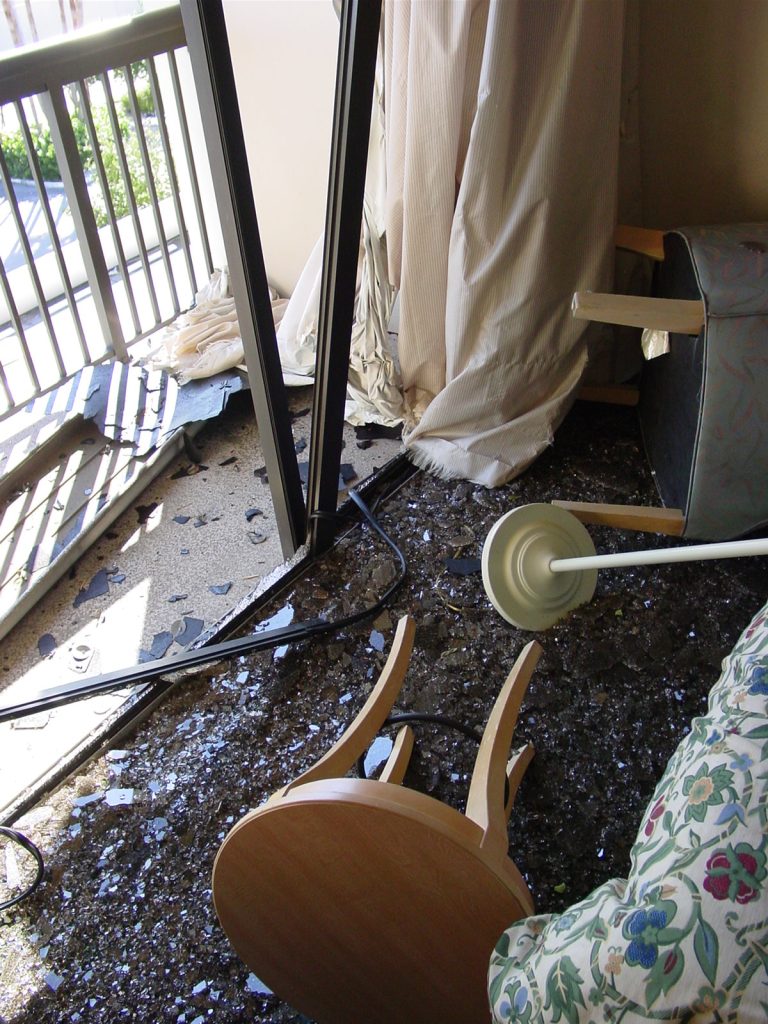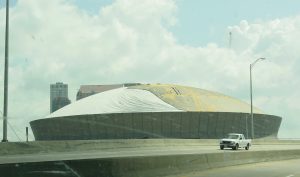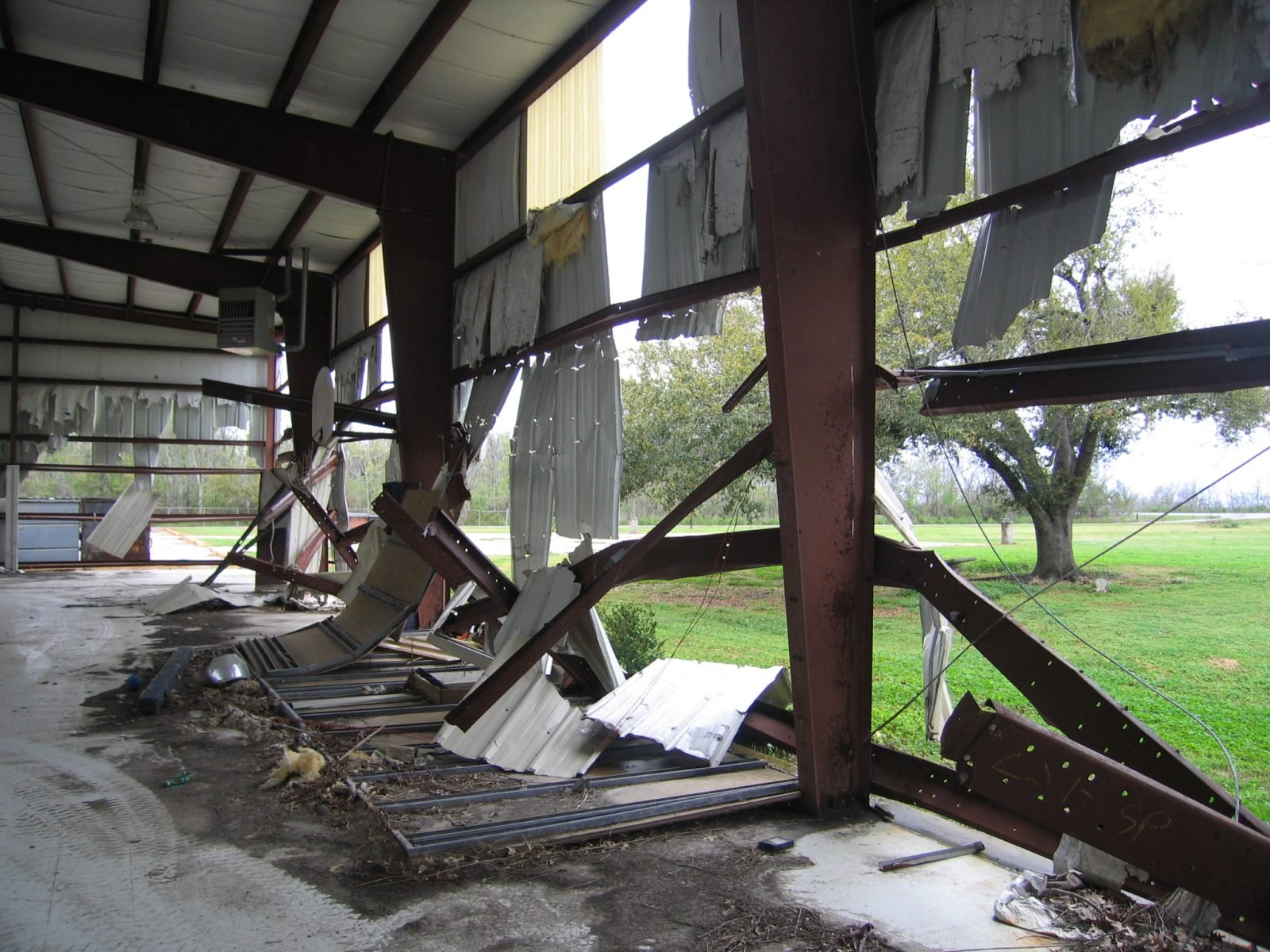Evaluating Building Enclosures after Hurricanes

After hurricanes, it is important to assess storm-related damage from wind, rain, and flooding, and determine potential repairs. This helps building owners to restore normal building function and insurers to consider the losses covered by an owner’s policy and compensate for them. This process includes identifying hurricane-related damage, determining paths of water entry caused by facade or roofing damage (versus preexisting deficiencies related to maintenance, age, design, or installation), and developing practical recommendations for repairing enclosures. Timely and accurate assessments can determine the extent and causes of damage to the building and its enclosure caused by these factors.
Common Building Enclosure Problems Caused by Hurricanes
Following a hurricane, it is important to understand the enclosure’s condition and to mitigate further damage that may result from weather exposure. For insurance coverage purposes, it may also be necessary to determine the timing of wind, rain, and flooding with respect to their impact on the building, or whether water intrusion was caused by wind-damaged components or by wind-driven rain without such damage. Common building enclosure considerations, system susceptibilities, and causes of failures related to wind and water include the following:
Roof Damage from Wind and Debris

Hurricane-damaged roof
Wind damage to the roof covering system (e.g., asphalt and tile shingles, metal panels, and low-slope roofing membranes) during a hurricane is often caused by uplift forces or impact from windborne debris. The resulting damage can allow water leakage into the building. Many roofing warranties exclude damage caused by winds well below typical wind-design criteria found in modern building codes. The roof’s age, quality of original installation, maintenance history, and preexisting deterioration can also affect the roof’s performance during a hurricane.
Wind creates uplift loads on roofs. If these forces exceed the strength of the covering or its attachment, the covering may detach. The highest uplift pressures typically occur at roof corners and edges, so these zones can be more vulnerable to uplift failures. Loss of roof coverings can lead to catastrophic water intrusion.
Roofs are also susceptible to damage from impact due to flying debris or from roof-mounted equipment displaced by wind. Even small punctures in the roof covering can lead to water leakage during heavy rains associated with a hurricane, particularly if damage occurs in pond-prone areas or if roof drainage is overwhelmed by heavy rain. Following these events, roofing systems should be carefully inspected and checked for evidence of impact damage, detachment of roof coverings, and flashing deficiencies that can lead to water leakage. Prompt patching of openings by a contractor, even on a temporary basis, must be performed to prevent additional damage. Trapped moisture can degrade materials over time, which may negatively affect the roof’s performance during future events and reduce its thermal performance. Post-hurricane assessment and identification of wet materials concealed beneath the membrane can help building owners plan for repairs that can prolong the roof’s service life and help insurers determine the extent of roofing damage as needed to assess the validity of claims and quantify covered losses.

Facade and Fenestration Damage from Winds and Leakage
Exterior walls and windows can also be damaged by flying debris or wind pressure, resulting in cladding loss, glass breakage, or weakening of system attachments. These issues can also lead to water leakage into concealed wall spaces or the interior. If the building loses window or curtain wall glass, it can experience increased internal building air pressure due to wind forces, which can contribute to structural, roofing, or interior wall damage.

Hurricane-damaged wall
Although leakage through the facade can occur due to structural or impact damage, it can also occur at wind pressures significantly lower than those needed to cause structural damage to the building or these systems. Such leakage can occur even without system damage if wind pressures during periods of heavy rainfall exceed the cladding or fenestration systems’ design for water infiltration resistance. If the leakage paths are concealed within the systems or surrounding construction, it can be difficult to find and repair the leakage sources without a detailed investigation.

Post-hurricane assessments of building enclosures can help identify apparent and concealed damage caused by the storm and determine the causes of water entry into the building.
Hurricane-Caused Flooding Damage
Exterior walls, foundations, and slabs-on-grade can be affected by flood waters and potential contaminants carried by the water. Even relatively minor flooding can cause significant damage by submerging materials and components that are not designed to be wet.
During floods, rapidly rising water levels, strong currents, and waves in the water may create extreme pressures against exterior walls, cladding systems, and floor systems. Depending on water depth and flow velocity, flood loads may be many times greater than wind loads.

Conclusion
Hurricanes can cause extensive wind and water damage to building enclosure systems due to the loss or failure of components. Hurricanes can also cause extensive water damage inside the building without obvious damage to the enclosure system itself—often due to poor design, maintenance, or installation. Post-hurricane assessments of building enclosures can help identify apparent and concealed damage caused by the storm and determine the causes of water entry into the building. When these events occur, detailed investigations and analyses of building enclosure systems may also be necessary to determine the underlying causes of enclosure failures and support a comprehensive scope of work to repair the building.